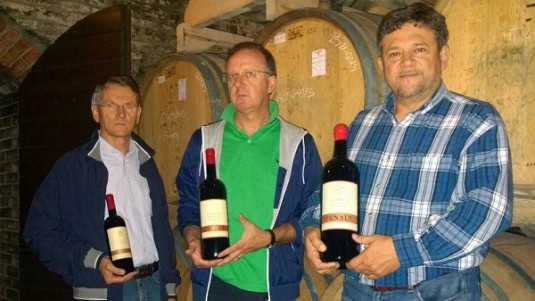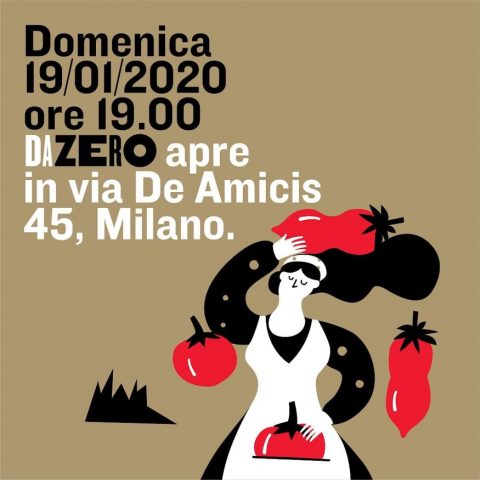Gemola, a volcano in the middle of the Po Valley (1)

The Colli Euganei (Euganean Hills) seem to come out of nowhere when they appear to the right of the A13 motorway in the direction from Padua to Bologna, just before Rovigo, in the Po Valley. Although they became the first national park in the region of Veneto, in 1989, this area has never been able to connect itself tourism-wise with nearby Padua nor, more importantly, Venice. The same goes for wine production even though the Colli Euganei area produces some great dry whites, especially Pinot Bianco, as well as wonderful Moscato dessert wines of rare elegance. The latter are less vegetal and more floral than those produced in Piedmont and have a lower alcoholic content than those made in southern Italy. The zone also produces some of the most complete Bordeaux blends in Italy which are less crude than those from Alto Adige, less ‘cold’ than the ones of Trentino, less tannic than the Tuscan versions and with a more nuanced pyrazine note than the other wines of the region and those of Friuli. Above all, the superior quality of the tannins allow Colli Euganei reds to have an almost unique capacity to unite drinkability, on the one hand, with a propensity to age on the other.
Unfortunately, too few wine lovers in Italy know the area and its wines because it finds itself caught between two neighboring giants like Valpolicella and Soave. And although it has yet to find itself in the tourism mainstream, there are many reasons to visit Colli Euganei, last but not least the warm springs of the Abano Terme spa.
Vignalta is one of the estate’s that has contributed most to bolstering the quality of Colli Euganei wines. It belongs to Lucio Gomiero, a great agricultural entrepreneur who brought radicchio to California, together with Paolo Guzzo and Luciano Salvagnin.
Since 1980, it has been able to exalt the various pedoclimates of the Colli Euganei in a bottle, cultivating different varieties of grapes in the areas most suited for them and this effort has resulted in creating several cru, first among them the vineyard of Monte Gemola, one of the highest and better-known hills in the area which reaches an altitude of 600m above sea level.
The soil here is volcanic and can conserve water in its subsoil even during particularly hot and dry periods. This, in part, explains the surprising physiognomy of Gemola 2011 and 2003, as we will see in tomorrow’s tasting reviews. These vintages are very fragrant despite coming from two extremely hot seasons. All this makes this area perfect for producing top quality Merlot and Cabernet Franc grapes.
The estate has a total of 40 hectares divided into eight parcels spread throughout the DOC Colli Euganei appellation. The vines are mostly cordon-spurred trained with a density of around 5,000 vines per hectare with a consistently low yield to ensure high quality grapes. The vines used to make Gemola have a yield of some 6,000kg per hectare which can fall to as low as 2,500kg in the drier and poorer areas. This is similar to the yields of Sauternes and Domaine de la Romanée-Conti. The grapes are the product of meticulous work done in the vineyards using integrated pest controls, while a minimalist approach is used in the winery and after normal fermentation the wines are neither filtered nor clarified. The result are wines that have great finesse and balance. The wine cellar is carved out the rock creating the best conditions for aging, which takes place in 500-liter tonneau barrels.
The following chat with Lucio Gomiero sheds a better light on the area, the estate and their showcase Gemola wine, a blend of Merlot and Cabernet Franc.
Doctor Wine: What are the Colli Euganei?
Luci Gomiero: To understand the Colli Euganei you have to take into account that the Po Valley was once part of the Adriatic Sea. Some 30 million years ago, there were volcanic eruptions that saw the Colli Euganei emerge as small islands. The soil of these hills falls into two categories: on the top, the cone that was above water, it is volcanic having been created by the lava coming out during the eruptions. Below this the soil become more calcareous because the magma remained inside the volcano even if it raised the seabed. Geologically speaking, the Colli Euganei are thus very complex and this explains why they have such a great capacity to produce such different wines, from dry white to sweet Passito, from young reds to important aged ones.
DW: What does Gemola represent for the estate?
LG: Gemola is our best-known wine. We produce 25-30,000 bottles of it and only in the best years. The wine, a Bordeaux blend of Merlot and Cabernet Franc, is the feather in our cap, as confirmed by the many prizes and recognitions it has won at home and abroad.
In tomorrow’s installment we will conclude our interview and offer a vertical tasting review of Vignalta’s Colli Euganei Gemola.

 Italiano
Italiano








